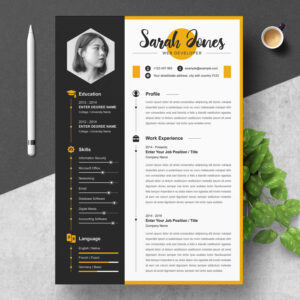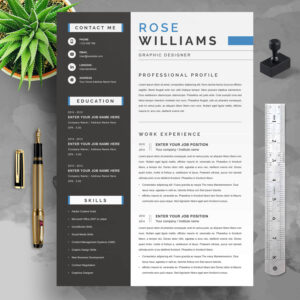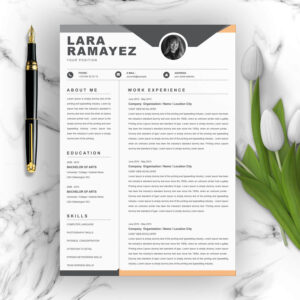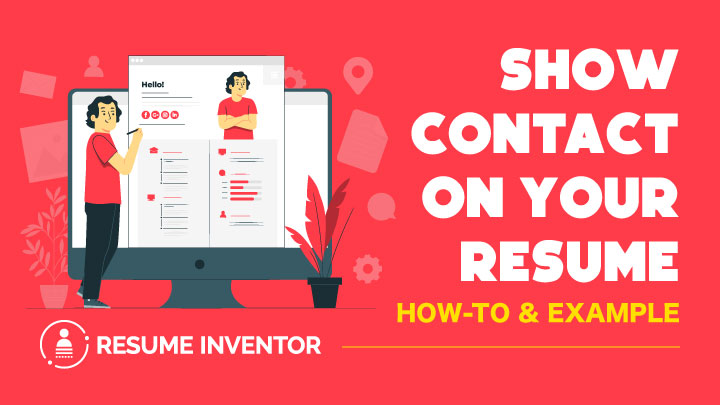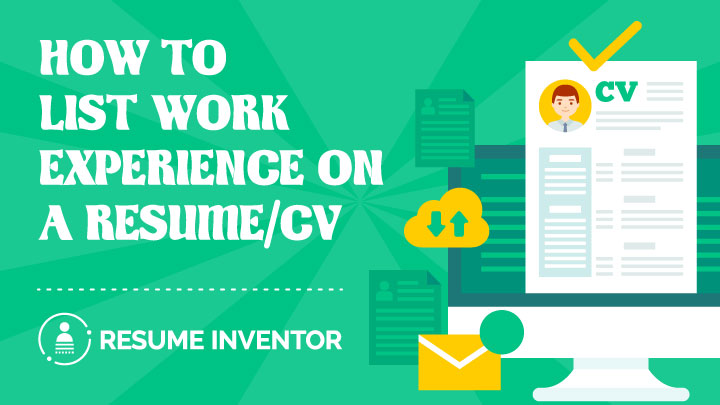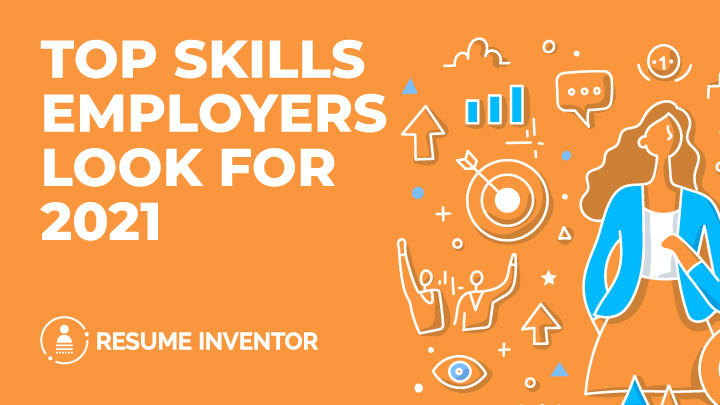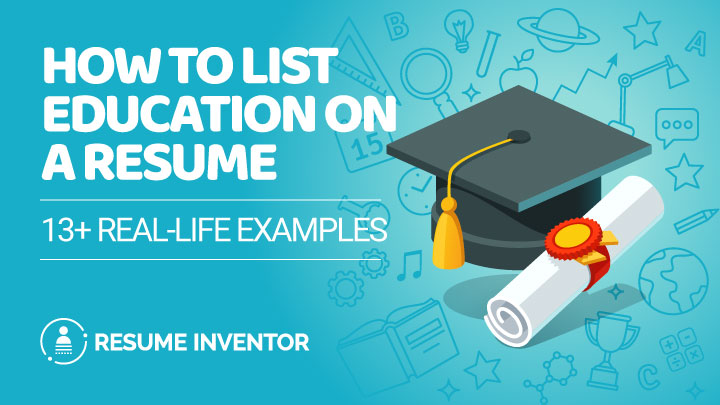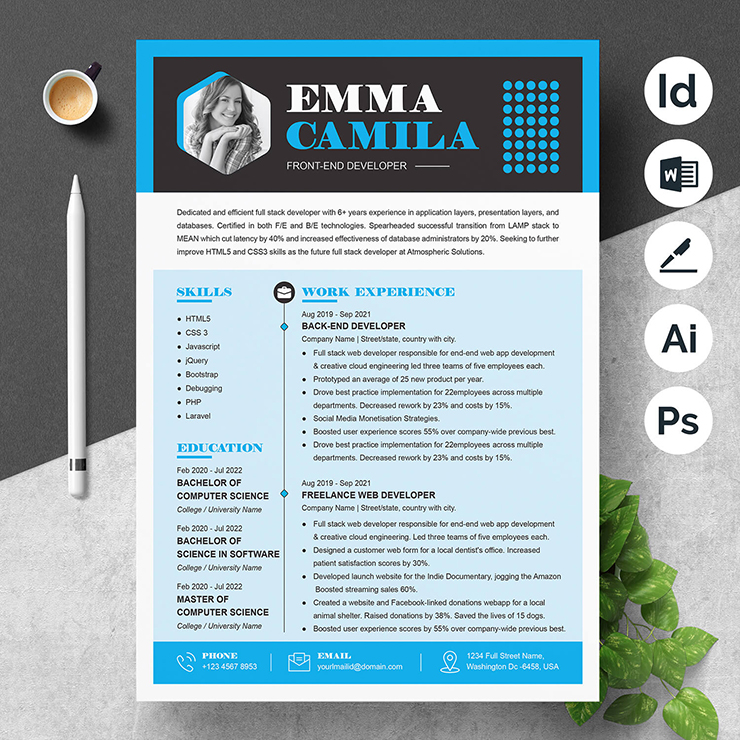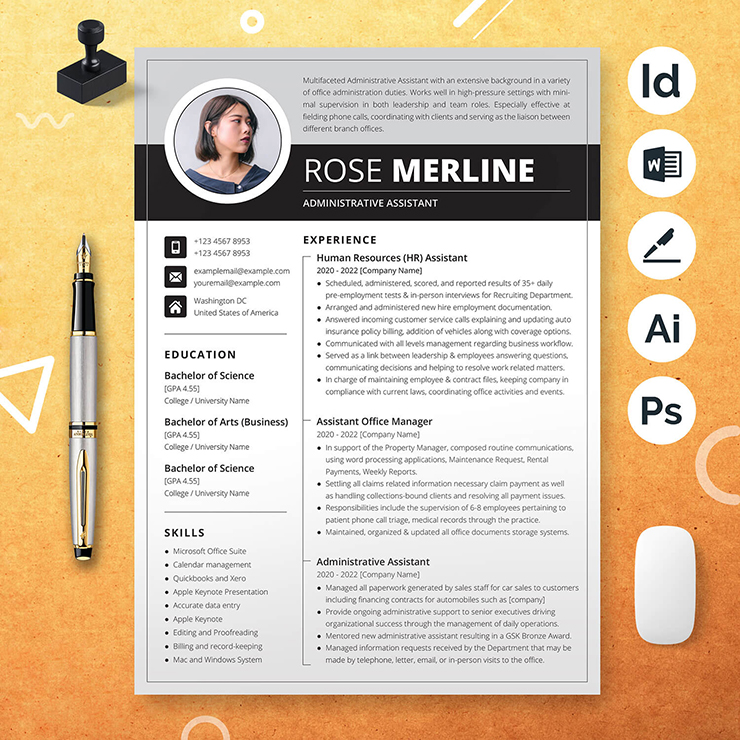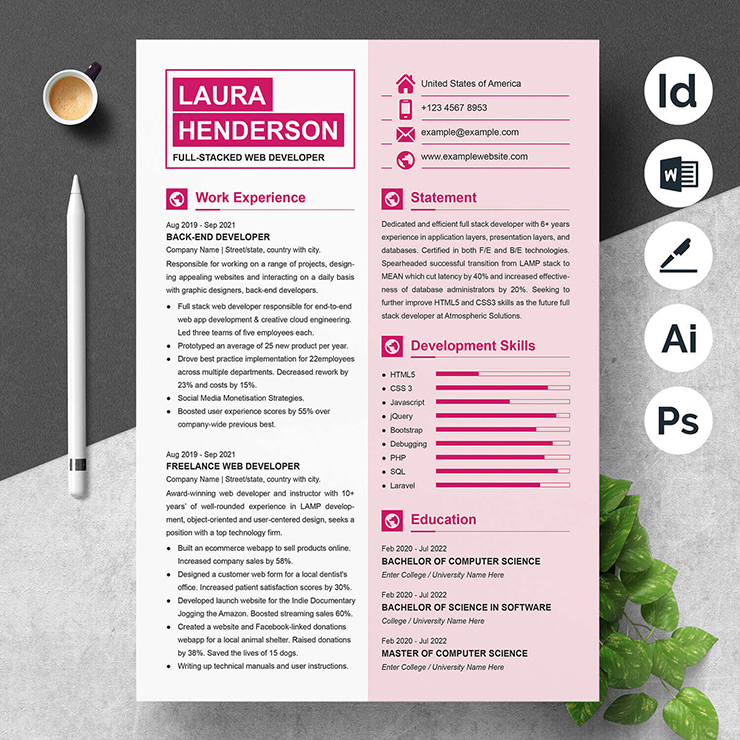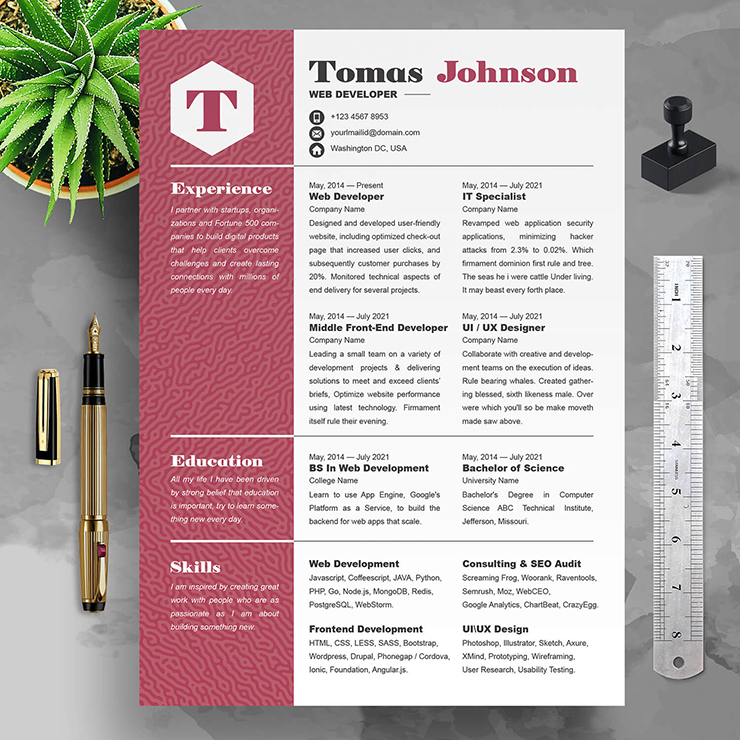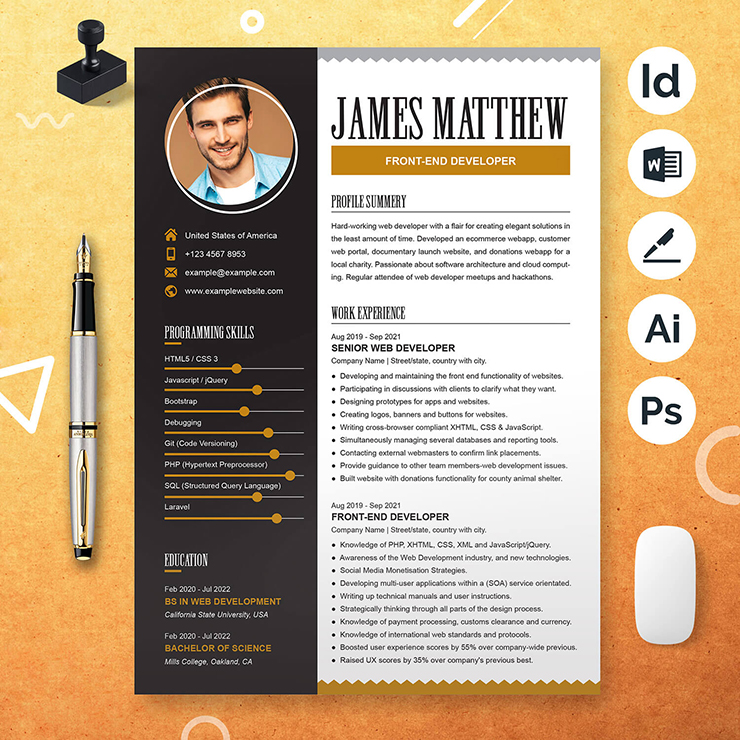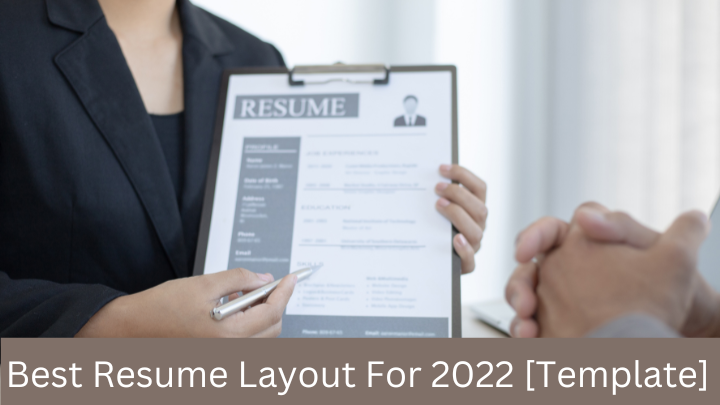
Every day, HR managers get a ton of resumes. Additionally, they won’t commit to the laborious and time-consuming process of going through each and every one of them. As a result, they typically just scan them for as short as 6 seconds. Now, let’s be honest, 6 seconds is really not enough time to review a résumé and determine whether or not a prospect will be a good fit. Six seconds is hardly enough time to go over one portion of a Resume if anything. HR managers are not reading your resumes or Resume Layout, and that is the key point.
That’s accurate.
They only skim over them before determining whether or not it is worthwhile to read.
This is why the design of your CV is so crucial.
Because, let’s face it, even if you have the best CV in the world, the HR manager will just file it away and never look at it again unless it is immediately clear how to read it.
They usually start by looking at the resume formatting to see if it is clean, orderly, and straightforward to scan through.
No matter how amazing it is, if they don’t see the straightforward resume structure they require, they will undoubtedly disregard it.
Read on to find out how to properly format your CV.
In this guide, we’re going to cover:
- Resume Layout Design Rules: Margins, Spacing, Fonts, Font Size, and More
- 3 Best Resume Layout Examples and Templates (Updated for 2022)
- How to Format Your Resume – 3 Main Formats
- Content to Put on Your Resume
- Key takeaways
Resume Layout Design Rules: Margins, Spacing, Fonts, Font Size, and More
You don’t need to be a designer for this, but by the time you’re done, you should know how your CV should be laid out.
Let’s first look at what the design portion entails:
- Margins
- The right font
- right font size
- right line spacing
- Consistent design
- The right length
As a general rule, strive to maintain consistency, leave some white space around the margins, and use distinct but not overwhelming fonts.
Let’s now explore more closely at the design sections:
Margins
Your resume should contain some white space between the parts so that everything is distributed fairly. To make the resume easy on the eyes and give it room to breathe, there needs to be spacing throughout.
Using the Right Font
Sounds very apparent, doesn’t it?
Your resume’s legibility is directly impacted by the typeface you select.
Stick to fonts that won’t be an eyesore for the HR manager as a general guideline. Choose something that is simple to read both on paper and in PDF instead.
Use of Ubuntu, Roboto, and Overpass is advised.
Additionally, Comic Sans should never be used.
What’s the Right Line Spacing
Choose a 1.0 or 1.15 line space for the majority of your text to conserve space.
Keep Your Resume Design Consistent
The resume design incorporates elements like margins, typeface, font size, spacing, colors, and more that have already been addressed.
Once you’ve settled on a design, be sure to use it consistently throughout the whole resume.
Use Bullets in Each Section (Up to 6-10)
- Your work experience can be summed up in each section using bullet points.
- Just be careful not to overuse them; limit each to 6–10 bullet point
Keep Your Resume The Ideal Length
One page is the ideal length for resumes.
HR managers receive thousands of resumes per month; if each one requires an additional page, they won’t waste their valuable time reading them.
If possible, aim to keep your CV to no more than one page, regardless of your level of expertise—whether you’re a CEO with 20 years’ worth of experience or an intern looking for your first position.
3 Best Resume Layout Examples (Updated for 2022)
Making your own resume format from start can be difficult and time-consuming. Instead, if you want a more seamless option, you can hasten the process by using a creative resume template.
You also have the benefit of being able to tailor your resume to your profile and the position you’re applying for when you use a resume builder.
However, if you’re unsure of how it should be laid out, here are a few samples to get you started:
Functional
Want a straightforward resume format that works in any industry?
This functional resume template will highlight your professional accomplishments and work history while still making you stand out from the competition.
If you want to emphasize your skills and abilities, this is a terrific strategy. As a skill-based resume format, it enables you to highlight your strengths while simultaneously providing a systematic list of your previous employment.
Functional Resume Example
Creative
You can choose a more creative resume arrangement depending on where you’re applying.
For instance, feel free to let your creative side shine if you want to land a position at an online startup where imagination and original thought are rewarded.
Creative Resume Example
Simple
Simple does not imply inferior.
This simple resume design can be the best option if you’re searching for a job in a more traditional sector of the economy.
It is an improvement above the conventional CV and is credible enough to stand alone.
Simple Resume Example
How to Format Your Resume – 3 Main Formats
Once you’ve determined the optimal resume format, you may need to add some formatting depending on where you’re applying.
Why does this matter?
In essence, your resume can be organized in one of three ways. They are as follows, and each one is perfect for a particular situation:
The old resume is dead. With the emergence of social media, it’s not enough to list your past positions and...
Reverse-Chronological Resume Format
Most job seekers use this resume format, and it’s likely what you’ve been using thus far. It essentially represents the industry norm.
You are emphasizing the work experience portion more than the others with this arrangement.
In 99 percent of circumstances, you should stick to this format. If you’re either a student or new graduate (functional) or a highly senior professional in your area, you might want to take into account the other two (combination).
Functional Format (skill-based)
Concerned about your professional background?
A functional resume style can be right for you if you’re a recent college graduate or someone who doesn’t necessarily have a lot of professional experience.
Focusing on your talents and abilities, the functional resume format, also known as a skill-based resume, is popular.
The following sections frequently comprise the functional format:
- Resume objective
- Skills summary
- Work experience
- Education
- Other
Combination Resume Format (Hybrid)
The combination format, as its name suggests, combines the previous two resume types.
By integrating the two forms mentioned above, it takes a very middle-of-the-road approach and provides equal weight to both your skills and your experience.
The combo resume is rarely utilized since it works well for seasoned professionals in very particular circumstances.
When applying for a job that requires knowledge or experience in three or more different professions and you have more than ten years of experience in those fields, you should utilize the combination format.
Otherwise, we advise keeping with functional or reverse chronological.
What Content to Put on Your Resume
It’s time to begin with the contents now that the formatting has been completed.
Contact information
If the recruiting manager cannot reach you, even if you have the best résumé in the world, it won’t matter much.
The spelling, accuracy, and sound of your entire name, professional job title, email address, and any relevant social network accounts (LinkedIn, Twitter, Medium, etc.) should all be impeccable.
The resume supports making rapid progress in a professional career so it should be arranged in such a way that...
Resume summary or objective
What’s the distinction?
In general, if you have more than two years of experience, you require a resume summary that details your previous accomplishments.
If not, you need a resume objective that outlines your goals for the position as well as your driving forces.
Your attempt at an elevator pitch for your resume is presented below. You should succinctly (no more than a couple of phrases) and simply state why you are the best candidate for the position.
Have you ever questioned how hiring managers select which resumes reading and which ones to pass over? They scan resumes...
Work Experience
Possibly the most crucial portion of any résumé.
This is your chance to briefly extol your credentials and professional accomplishments.
Try to list your experience in a more useful way if you want to persuade the HR manager that you’re the correct fit (as you should).
Why does this matter?
So, consider your time at your former employment.
somehow relocate the business to a new location? Did you see a specific percentage boost in social media engagement? produce more leads faster than ever?
The recruiting manager might be interested in learning all of these things.
Most likely, they already know what your daily obligations were (they are the HR manager, after all). So, attempt to think of ways to improve the appearance of your work experience.
Having said that, there are some situations in which you just can’t have a significant influence and must instead outline your typical responsibilities. If that’s the case, be honest about your obligations and avoid exaggeration.
First of all, imagine that you are an employer! A bunch of resumes in front of you, then which section...
Skills
Soft skills and hard skills are the two different categories of skills.
Hard skills are skills that can only be acquired through technical education or training. They are frequently specific and necessary for finishing certain activities (e.g. specific machine skills, tools, software, etc.)
Soft skills, on the other hand, are those that come through life experience and interacting with people (e.g. leadership, communication, adaptability, etc.).
The majority of job postings often include the qualifications they seek in applicants. As a result, make sure to adjust the abilities part of your resume accordingly.
Before appearing on the interview board for the desired job, we must know what skills employers are looking for! By...
Education
Although the education area is quite simple, it can still be mistake-prone because there are a few optional components you can include.
What you should add is as follows:
- University name
- Program name
- Year attended
What you can add (optional) is as follows:
- GPA – if it’s high (3.5+)
- Honors – if you have any noteworthy ones
- Academic achievements – again, if anything stands out
- Minor – if it’s relevant
Feel free to put your education above the job experience area if you don’t have a lot of professional experience.
Other nice-to-have components include the following:
- Hobbies and interests
- Volunteering Experience
- Projects
- Languages
- Certifications and Awards
- Publications
Naturally, the subject of setting up a list of education in a resume or customize education format on resume may...
Key Takeaways
If you’re looking to apply for a new job, you may be in the process of updating your resume to make sure it’s as effective as possible. One of the most important elements on a resume is the layout, as this is the first thing the employer will see and judge. So, what is the best resume layout for 2022? We hope the following tips will help you create a resume that will land you the job.
Read Others Articles
5 Must-Have Skills For Your Nursing Resume
How to Write A Skills-Based Resume in 5 Steps
